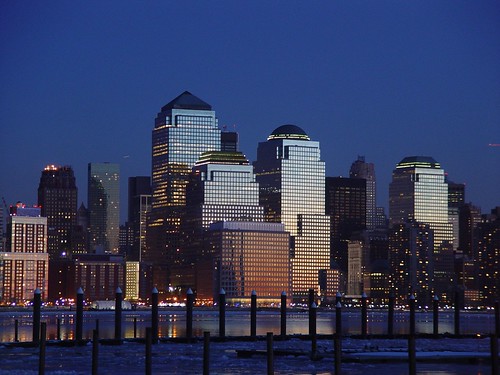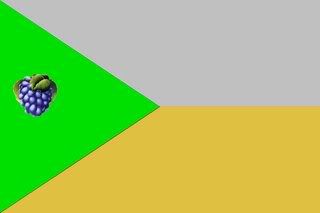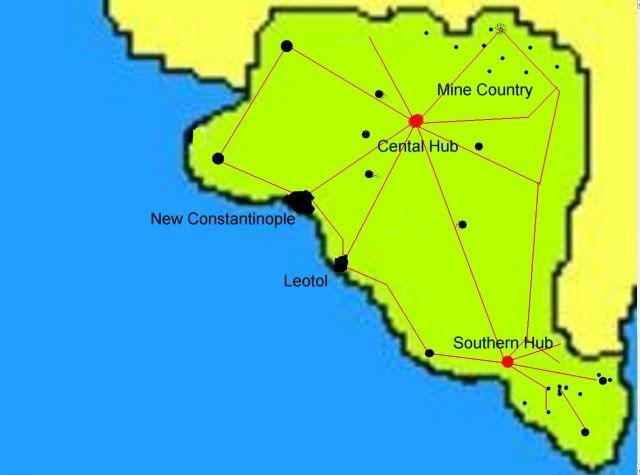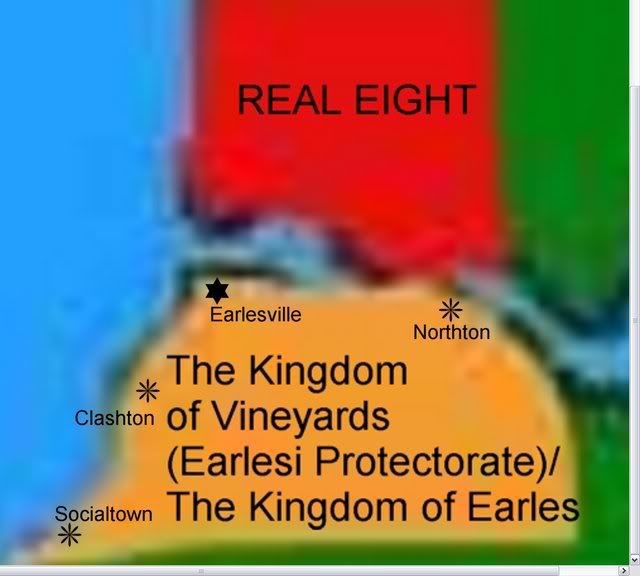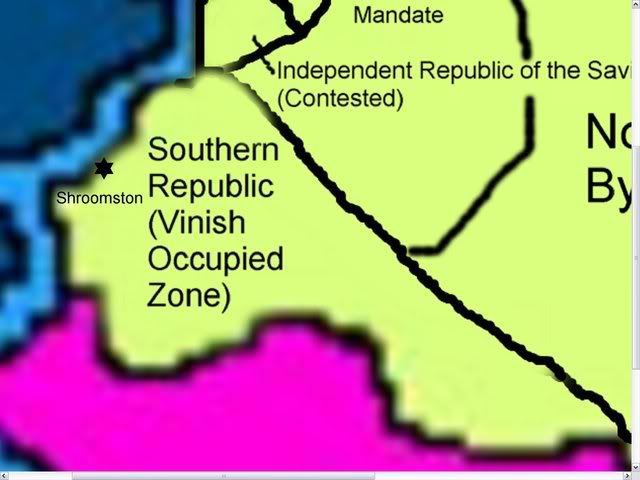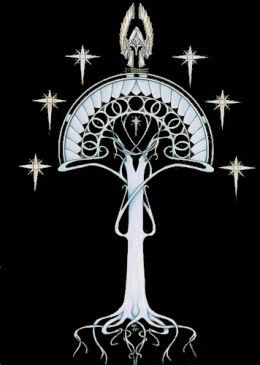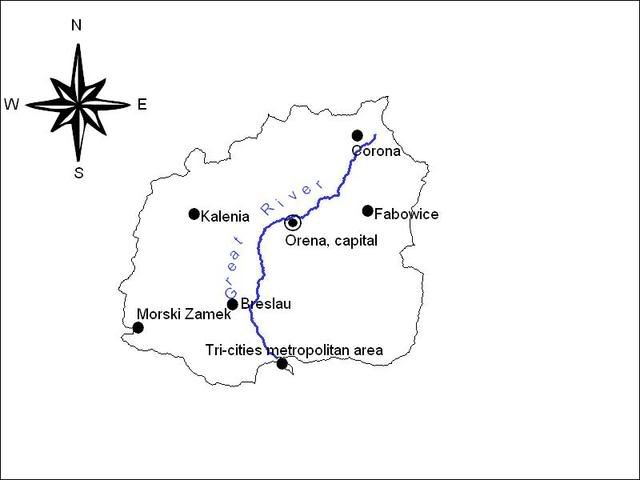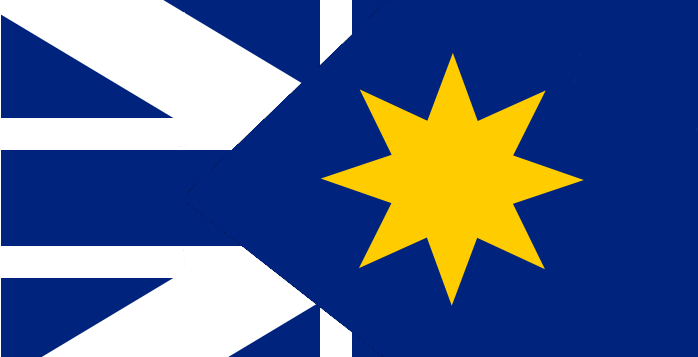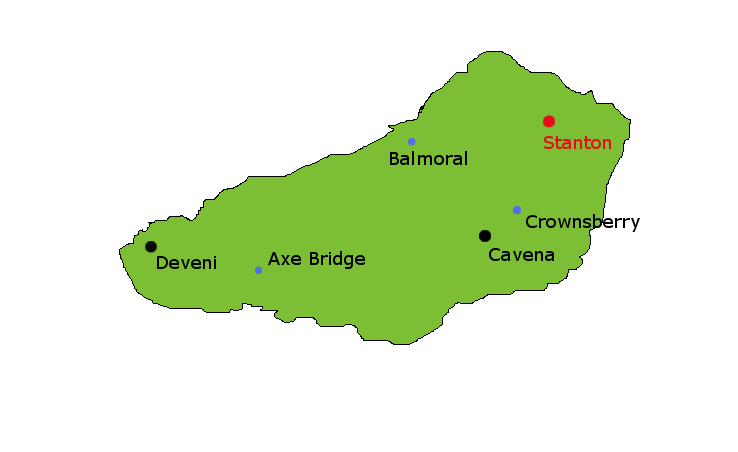The Byzantine Empire
Current Draft
Other names:
Vasilía Roméon,
Imperium Romanum
Country Factfile
Population: 55 million
Currency: Solidus (s), Solidi (p)
Government: The Government is that of a constitutional monarchy, with the Emperor of Byzantium being the head of not only of state, and the commander in chief, and also exercises duties in the Orthodox church. The Ecumenical Patriarch is head of the Orthodox Church and is the Emperor’s spiritual advisor. The Emperor however believes in free spirited worship and will not impose his will on the people, and he will also hold back with a tight leash any of the religious radicals. He is a firm believer of Science and its most steadfast patron. The Emperor has a court of advisors appointed by the Senate. The Senate is elected by the people and controls domestic policy. Military and foreign policy remain the purview of the Emperor, as it has always has been. Typically both Emperor and Senate try to maintain a cordial relationship and are heavily involved in discussions of the state although, as always, disagreements will inevitably occur. The Judiciary is independent and its independence enshrined in the Constitution.
The Emperor is served by two Exarchs; one serves as the Foreign Policy Adviser and has powers of a Foreign Minister, while the other serves as the Military Advser and has powers of a Defence Minister. The Emperor has a Chief Adviser who serves in as a Chief of Staff.
Relgion: The Ecumenical Patriarch is the spiritual leader for Orthodox Catholics across the world. Jerusalem and Mecca represent great importance to Islam, Christianity and Judaism. 80% of the population are composed of Orthodox Catholics, 15% Muslim, 5% Judaism.
Racial composition: 70% Greek/Slavic/Latin, 5% Jew, 25% Kurd/Arab
Much inter-marrying took place in the Byzantine Empire between Latins, Greeks and Slavs over the last few centuries. To some extent, there is no true Greek, Slav, or Latin any more.
Major Cities: Konstantinoplis, Thessaloniki, Athens, Korith, Nikea, Smyra, Ikonium, Antioch, Trepezond, Sinope, Jerusalem, Tarsus, Ephesus
(There are of course more, but these are the key cities)
Social Policy
Byzantium is capitalist, yet it provides a social net to ensure that every citizen has enough funds to obtain an education. Health care follows a copayment scheme where citizens are expected to pay a portion of the fees, according to their income. Pension follows a copayment scheme. Each month, up to 5% of a person's income is set aside and placed in an investment fund with 3% per annum returns. The government gives a pension of $300 a month varying according to the person's average lifetime salary, while the income set aside and is returned to the citizen.
Economy: A GDP of USD$2.5 Trillion a year (as of 2008), Byzantium believes in a balanced economy and as such, focuses on a wide range of high tech products, such as semiconductors, electronics, computer software, nuclear technology, biotechnology, medicine, and also specializes in a wide range of services, such as finance, law, transportation, banking. It also has heavy industry that produces ships, cars, warships, steel, mining equipment, ocean salvage equipment, oil rigs and other heavy equipment. It is open to collaboration with other nations should they wish to collaborate.
The shipping industry is largely geared towards supporting its trade fleet and military with 3 main shipyards, which located at Constantinople, Thessaloniki and Athens. There are other satellite shipyards which service the ports at Antioch and Ephesus, and conduct repairs of navy ships. The ones at Constantinople, Thessalonika and Athens are classified as megashipyards capable of producing tens of ships a year when necessary. The Byzantine Empire has always been a beacon of trade and finance and operates one of the largest fleets of merchant vessels in the world, with a total of capacity of 60 million TEUs. Constantinople is a major financial center with many large banks and investment houses involved in all aspects of finance. There is a sizable weapons industry geared towards the support of the military. This is in line with Byzantium policy of being balanced an self-sufficient.
It has a significant Agriculture and fishery industry. Byzantine wines are among the best in the world. Producing rice, wheat, fruits and many other agricultural products, these products are both for local consumption and for export. Byzantine Fisheries is a significant fishery company that has many fish farms and a sizable fishing fleet that goes around the world catching fish.
Major Exports: Aluminium, Copper
Minor exports: Uranium, Niobium, Titanium, Iron
Oil is produced in Arabia and the profits are divided with the two Caliphates.
Major companies:
Constantinople Shipping: Premier Shipping fleet. It operates the merchantile fleet of the Empire and ships goods all over the world. The company currently operates a mixture of 16000, 12000, 8000, 4000, 2000 and 1000 TEU vessels, and is inclined to purchase newer ships.
Byzantine Salvaging and Rescue Company: This company is dedicated to salvaging and towing and transporting ships to the repair dock in question. They operate a number of floating dry docks, salvage vessels, dredgers, semi-submersible heavy-lift ships etc.
Byzantine Heavy Industries: Involved in mining, mineral extraction, vehicle construction, building construction, turbine engines, tank design and construction, heavy equipment, construction, deep drilling, nuclear energy, high quality steel, gas turbines, aircraft engines etc., Byzantine Heavy Industries is an important part of the economy furnishing many needs and requirements.
Kontos Munitions: Major Weapon systems development and production company, the company produces many of the Empire's weapon systems, such as missiles, radar, guns, torpedoes. Kontos has a rocket engine division that designs and produces rocket engines for many weapon systems and rockets.
Byzantine Aeronautics: Major Aeronautics company, it is involved in the design and development of airplanes and is in a joint venture with Shroomanian company MacMillion Corporation to design and produce aircraft to be sold on the international market. The company is known as BAM. It is also involved in designing UAVs and fighter aircraft and bombers.
Constantinople Shipyards: Pride of the Byzantine Empire, the Shipyards have a long history of producing ships for the Empire. Hundreds of years of experience and innovation has granted it the ability to design any ship, large or small. It has a massive potential capacity, and was instrumental in producing and replacing warships lost in war.
Constantinople Port Authority: Runs the Empire's ports and facillitates trade.
Byzantine Oil Pte Ltd: Major energy company involved in oil extraction and is involved in alternative energy research.
Byzantine Airlines: Operating a mix of B777-300/200ER and A380 and A320/30, the airline flies across the world.
Archimedes Software: software company
Icarus Electronics: Major manufacturer of semiconductors, fabs and other consumer appliances (like TSMC + Samsung)
Byzantine Telecom: Major telecommunications service provider, lays land lines and wireless network, maintain cellphone services, WIFI network.
Avatar Telecom: Competitor to Byzantine Telecom
Space Telecommunications: JV between Byzantine Telecom, Archimedes Software and Icarus electronics. Aims to deliver telecommunication services, video on demand, music content, Internet search engine services and maintain its own network of telecommunication satellites/stratellites
Byzantine Pharmaceuticals: Pharmaceutical company. Jointly engages in joint research with universities and its counterparts in Kingdom of Serenity. Recently formed a massive joint venture company with Taichiana. The company is Taichiana Byzantine Pharmaceuticals (TBP).
JetKon Budget Airways: Budget airline.
Veritas Media Corporation: A major media company that produces Constantinople Times, and Constantinople Television.
Education: 100 universities across the nation all state supported. It is law for students to finish high school. Students are supported by the state if so required. Sciences and Engineering fields are actively supported. Finance related courses are popular largely because of the vibrant Financial industry.
R&D: Research and Development at universities is heavily supported by the state and is of the order of tens of billions yearly. The state has many ambitious projects conducting research on various fields including nuclear fusion and space exploration in numerous research institutes and is open to collaboration, so long as Byzantium gets all the available information derived from the research.
Some research institutes:
Nuclear Energy Institute: Involved in heavy research into nuclear energy, particularly fusion
High Energy Institute: Involved in particle Physics research
Joint Institute for Laboratory Astrophysics (JILA): Involved in astrophysics, atomic molecular optics and condensed matter research and other semiconductor research
Joint Quantum Institute (JQI): Involved in atomic molecular optics and condensed matter research for the use of constructing a Quantum Computer and exploring other Quantum phenomena. JQI and JILA research areas overlap and are fierce competitors
Biotech Institute: Involved in Biotech research
Biomedicinal Research: Involved in medicinal research
Alternative Energy Institute: Exploring new energy sources.
Material Science Institute: An institute involved in research on new materials
Space Science Institute: Space research, applications.
Energy: Byzantium believes in renewable resources, and continues to research renewable fuels and greater fuel efficiency, but recognizes that long term policy must somehow deal with the exploration of oil and as such directs resources to secure oil within its own borders and also from friendly sources. The Energy Dept is also in charge of general natural resource procurement and manages state enterprises that are involved in mining and extraction of all natural resources.
Energy infrastructure wise, the country maintains several 1.6GW reactors, and has extensive research into nuclear energy. The Empire, along with the Arab and Egyptian Caliphates maintains oil drilling facilities in Arabia.
Military Order of Battle
Expenditure is pegged at 6% of GDP, with the upward potential of hitting 10-15% if required. NOTE: Byzantium has special Greek fire warheads, assumed to be continually developed for centuries, into a form that is weaponisable, and used for various applications, be it rockets, bombs, mortars etc.
Imperial Byzantine Navy
Among all the three services, the Imperial Byzantine Navy is considered the most senior of the two and receives the most funding. The Imperial Byzantine Navy consists of 4 Commands: Forward Fleet, Home Fleet, Coastal Command and Fleet Auxiliary. The Forward Fleet consists of fleet units tasked with defending the Empire far away from its shores, while the Home Fleet is tasked with securing the Empire's home waters and Coastal Command is tasked with reconnaissance and coastal defense. Home Fleet however can be called upon to conduct expeditionary strike missions. Expedition Command is thus under Home Fleet Command. Fleet Auxiliary is charged with management of the fleet repositioning vessels to undertake transportation of army equipment for the purpose of attacking a foreign nation, and is also charged with Fleet Replenishment. The Navy operates 4 brigades of Varangian Guard Marine special forces units, charged with different tasks, such as frogmen, deep diving, ship boarding etc.
Unit Organisation
Naval Bases
Antioch
Arabia
Athens
Constantinople
Crete
Jerusalem
Nikea
Thessaloniki
Shipyards
Naval Arsenal at Constantinople
Naval Arsenal at Antioch
Naval Arsenal at Athens/Crete
Forward Fleet
1st Justinian CVBG
- 1st Cruiser Sqn
- 1st Destroyer Sqn
- 1st Frigate Sqn
- 1st Corvette Sqn
- 1st Submarine Sqn
- 2nd Submarine Sqn
- 1st Replenishment Sqn
2nd Heraclius CVBG
- 2nd Cruiser Sqn
- 2nd Destroyer Sqn
- 2nd Frigate Sqn
- 2nd Corvette Sqn
- 3rd Submarine Sqn
- 4th Submarine Sqn
- 2nd Replenishment Sqn
3rd Constantine CVBG
- 3rd Cruiser Sqn
- 3rd Destroyer Sqn
- 3rd Frigate Sqn
- 3rd Corvette Sqn
- 5th Submarine Sqn
- 6th Submarine Sqn
- 3rd Replenishment Sqn
Home Fleet
1st ESG
- 4th Destroyer Sqn
- 4th Corvette Sqn
- 5th Corvette Sqn
- 7th Submarine Sqn
- 8th Submarine Sqn
- 4th Replenishment Sqn
2nd ESG
- 5th Destroyer Sqn
- 6th Corvette Sqn
- 7th Corvette Sqn
- 9th Submarine Sqn
- 10th Submarine Sqn
- 5th Replenishment Sqn
3rd ESG
- 6th Destroyer Sqn
- 8th Corvette Sqn
- 9th Corvette Sqn
- 11th Submarine Sqn
- 12th Submarine Sqn
- 6th Replenishment Sqn
Expeditionary Command
1st LSD Sqn
1st LST Sqn
Coastal Command
10th Corvette Sqn
11th Corvette Sqn
12th Corvette Sqn
13th Corvette Sqn
13th Submarine Sqn
14th Submarine Sqn
1st Sea Reconnaissance Sqn (Tu-142BM)
2nd Sea Reconnaissance Sqn (Tu-142BM)
3rd Sea Reconnaissance Sqn (Tu-142BM)
4th Sea Reconnaissance Sqn (Tu-142BM)
1st Strike Bombing Sqn (Tu-95BM)
Fleet Auxiliary
1st Fleet Oiler
2nd Fleet Replenishment
3rd Fleet Replenishment
4th Fleet Support
5th Fleet Hospital
Fleet Dockyard Command
Strategic Command
1st Strategic Cruise Missile Submarine
1st Assault Cruise Missile Submarine
Fleet Unit Structure
1 Nuclear Carrier Battle Group (CVNBG) consists of
- 1 CVN (Nimitz Type of the CVN-77, CVN-78 subclass)
- 1 CGN + 2 MH-60 (Kirov Type)
- 2 CG + 4 MH-60 (Ticonderonga)
- 4 DDG + 8 MH-60 (KDX-III armed with US weapons, not Korean. SM-2ERs/SM-3, RIM-162 ESSM)
- 8 FFG + 16 MH-60 (F-100)
- 3 (4) SSN (3 Seawolf, 4 Akula II Mod-BM)
- 2 Invisible Hand Ocean Surveillance ships (typically following behind)
- 8 flights of F/A-18E Super Hornets (32 aircraft) -- To be replaced by CFN-01
- 6 flights of F/A-18F Super Hornets (24 aircraft) -- To be replaced by CFN-01
- 3 flights of F-14E Super Tomcat (12 aircraft)
- 1 flight of EF-14E Growler (4 aircraft)
- 3 flights of S-3 Viking (12 aircraft)
- 2 flights of EA-18G Growler EW (8 aircraft) -- To be replaced by CFN-01
- 3 flights of KA-6D (12 aircraft) for air refueling
- 4 E-2D Hawkeye-type AWACs
- 4 C2 Greyhound Air Tankers/Cargo planes
- 12 MH-60 LAMPS-III helos
- An assortment of UAVs including Global Hawks and Hermes Series UAVs
The Home Patrol Fleet consists of
- 1 CGN + 2 MH-60 (Kirov. Helicopters attached to Kirov are refitted for sighting duties.)
5 CG + 4 MH-60 (Ticonderonga)
16 DDG + 24 MH-60 (KDX-III)
28 FFG + 56 MH-60 (F-100)
28 Corvettes (German K130)
12(8) SSN (12 Virginia, (8) Akula II Mod-BM)
24 SSKs (German Type 212B)
28 Corvettes for Minesweeping/ASW (Visby with nonmagnetic steel)
2 X-Band Radar Command Ships
200 or so fast attack vessels for coastal patrol. Mix of Uragan or Flyvefisken class or Antares
1 ESG consists of
- 1 LHD (with the option of adding an additional LSD and LST)
- 1 Praetor or Exarch CGN
- 2 KDX-III destroyers or Praetor/Consul DDGN
- 4 F-100 frigates
- 3 K-130 corvettes
- 2 Visby minesweepers (Possibly augmented with additional 2)
- 3-4 Virginia Submarine (Aegean) or Akula
- 3 Type 212B (Black Sea)
- 2 Invisible Hand Ocean Surveillance ships
Fleet Auxiliary:
- 2 MARS-R Fleet Replenishment vessel + 2 NH-90 LAMPS IV Helos
2 MARS-O Fleet Oiler + 2 NH-90 LAMPS IV Helos
2 MARS-S Submarine Tender + 2 NH-90 LAMPS IV Helos
2 MARS-RO roll-on/roll off ship
8 "Provider"-class Replenishment ship, heavy + 2 MH-60 LAMPS-III helos ("Lewis and Clark" look-alike)
8 "Sustainer"-class Replenishment ship, light + 1 MH-60 LAMPS-III helos ("Type-404/Elbe" look-alike)
8 "Industrialist"-class Oiler + 1 MH-60 LAMPS-III helos ("Henry J. Kaiser"-class look-alike)
8 "Supply"-class Task Force Underway Replenishment (TFUR) ships ("Supply" look-alike)
8 "Onager"-class Oceangoing tug/recovery vessel ("Apache T-ATF-172" look-alike)
12 "Hope"-class RO/RO Strategic Positioning ships ("Bob Hope (T-AKR-300)" look-alike)
3 "Stalwart"-class Ocean surveillance ship ("Stalwart")
4 Mercy class Hospital ships
2 Floating Drydocks
(Note: Floating dry docks can be requisitioned from Byzantine Salvage and Rescue Company)
Fleet Auxiliary vessels are deployed as required. Typically, 1 CVBG will have one oiler and one Replenishment vesssel accompanying the fleet. ESGs will get at least one Replenishment ship. Ships can also be commandeered from Constantinople Shipping in time of war.
Strategic Command:
3x Pr.881-955 (1 more in trial, 1 nearing completion. Target: 12)
4x Pr. 941M (2 on trials, 2 more nearing completion. Target 8 )
Fleet Totals:
3 CVNBG
Home Patrol Fleet
3 LHD (Wasp Type) + 18 MH-60
3 LSD (UK Bay class landing ship dock) + 6 MH-60
6 LST (Japanese Ōsumi class LST) + 6 MH-60
Name of Ships
3 Nuclear CVN (CVN-77 carrier):
Justinian
Constantine I
Heraclius
4 CGN (Kirov class) (Undergoing staggered refit to equip every ship in the class with P-750 Meteorite Missiles)
Belisarius, John Komnenus, Theodosius II, Vespasian
11 CG (Ticonderonga) (Decomissioned)
Alexius Komnenus, Basil II, Maurice, Manuel Komnenus, Leo III the Isaurian, Constantine XI, Augustus, Trajan, Hadrian, Tiberius, Antonius
28 DDG (KDX-III)
Konstantinople, Thessaloniki , Korinth, Nikea, Antioch, Jerusalem, Sophia, Sinope, Trepizond, Chalcedon, Amernia, Smyrna, Nicopolis, Ephesus, Philadelphia, Ikonium, Ancyra, Ephesus, Hellas, Peloponnese, Seleucia, Bosphoros, Thracia, Crete, Gaul, Germania, Slavia, Syria
5(2) CGN (Exarch class)
Exarch, Consul (STAR)
Maurice, Basil*, Sulla* (S-500F) - 16 planned 2 hulls laid per year. Construction period 2-3 years.
5(2) DDGN (Praetor)
Strategos, Praetor (STAR)
Genoa, Venice*, Syracuse* (S-500F) - 30 planned, 3 hulls laid per year. Construction period 2-3 years.
*: Shakedown cruises lasting 1-2 years.
52 F-100 Frigates, 28 K-130 corvettes, 28 Visby corvettes, 36 Invisible Hand Ocean Surveillance vessels (some in service in the Border Guards)
12 Virginia, 9 Seawolf submarines, 15 out of 20 Akula II Mod (5 per year.)
24 Type 212B submarine
Fleet shore patrol:
52 Tu-142BM sea patrol aircraft
16 Tu-95MS-BM strategic bombers
Naval Procurement
Under Construction: 1 Kirov, 1 Ticonderonga, 4 KDX-III, 4 K-130 corvettes, 2 Seawolfs, 3 Type 212A, 4 F-100 Frigates, 4 Visby Corvettes. Split between 3 shipyards. Expected completion: FY09
Under Construction starting FY09: 8 ASW frigates, 2 command cruisers with X-Band radar, 4 Mediterranean (Seawolf) and 12 Black Sea submarines (Type 212B)
Under Construction starting FY10: 36 ASW Invisible Hand Ocean Surveillance ships
Under Construction starting FY11: Exarch and Consul class cruisers
Under Construction starting FY12: Strategos and Praetor class destroyers
2 Pr. 941M under construction, with deployment expected 2011. 2 hulls will be laid per year. 1 Pr.881-955 to be laid down yearly from 2010
New MARS (Military Afloat Reach and Sustainability) series of Fleet Auxiliary ships has began construction. There will be five variants. One variant, MARS-R is designed as a Fleet Replenishment vessel designed to carry two cranes for the purpose of resupplying naval vessel weapons. MARS-O is designed as a Fleet Oiler. MARS-S is designed as a Submarine tender. MARS-RO is to be a roll-on/roll off ship. MARS-H is a hospital ship. A total of 8 of each type will be acquired, with a possibility of expanding the total number to 10 each.
All F/A-18E/F to be replaced by CFN-01 (Su-53), Electronic Warfare version of CFN-01 under development
Notes
Note 1: Upgrades: 1 RBU-6000 and 1 RBU-12000 launcher to be added to all destroyers and cruisers, and 1 RBU-6000 to be added to all corvettes and frigates. 4 RBU-12000 and 4 RBU-6000 launchers to be added for carriers. To be used for torpedo defence.
Note 2: All Type 212A to be upgraded to Type 212B.
Note 3: All Akula II Mod submarines undergoing extensive refit. To be launched from next year. Electronics and sensors comparable to Seawolf and Virginia, and quietness comparable to Virginia or better.
Note 4: All ships operate at the minimum a navalised Skylark 3 UAV and Fire Scout UAV
Ship stats overview
Invisible Hand Ocean Surveillance vessels wrote:
The navy has an intention of procuring up to 24 Invisible Hand class Ocean Surveillance vessels that are designed specifically for ASW work. Displacing approximately 7000 tonnes fully loaded, They are armed, and they come with 2 engine systems; 2 water jet and 2 screws. The waterjets will be used only during ASW operation, and screws when the ship is attempting to keep pace with a battlegroup. The screws are driven by powerful diesel engines to allow it to attain speeds of 30 knots. Engines are mounted above the waterline and are rafted. It uses a catamarian hull (similar to the T-AGOS-23 ships) and carries the SURTASS sonar system. The ship is armed with 6 starboard and port side 533mm torpedo launchers, 2 pairs of RBS-6000/12000 launchers and 8 ASROC launchers. The ship can fire an array of torpedoes. stored on board.
Praetor Class destroyers wrote:
Medium sized vessels to deploy the S-500F system and to carry sizable armament as a fleet escort vessel. The ships employs many stealth technologies, notably the Advanced Enclosed Mast/Sensor (AEM/S) System.
Tentative specifications
Systems
- APAR-1 radar system, which comprises of the APAR-MFR-1 X-Band Radar, and the APAR-VSR-1 S-Band Radar
- Sonar:
- HF and MF Sonar Array (Conformal arrays and bow array)
- Multifunction Towed Sonar Array/Ultra Low Frequency Active Sonar Array
- Integrated Undersea Warfare system for mine avoidance and submarine warfare, and anti-torpedo system
- Electro-Optical/Infrared System
- Integrated STAR combat system
- Integrated Torpedo defence system
- ECCM/ECM/Nulka decoys
- UAV control stations
Weapons
- 192 cell VLS system capable of firing S-500-C and the S-500-D/E missiles, and various cruise missiles such as Kh-101 and large cruise missiles. VLS system is modular and typical cell diameter ~.8m to allow for some expansion
- 6 533mm torpedo tubes
- 4 RIM-116 Rolling Airframe Missile launchers
- 4 CIWS Dual Goalkeeper gun systems
- 1 155mm AGS
- Surface Ship Torpedo Defence for hard and soft kill torpedo defence using decoys and counter torpedoes
- Nulka ship decoy system
Hull
- Propulsion: Nuclear with electric drive (~200,000 hp for up to 35 knots)
- Backup power: 2 turbines delivering 30MWt each
- total displacement estimated ~ 17,000 tonnes
- Hanger and landing pad for two helicopters and UAV launch stations
- Cost estimated ~ 3 billion
Exarch Class cruisers wrote:
The navy has announced that it will procure over 5 years 16 (or more) cruisers belonging to two classes dubbed, the
Exarch class and the
Consul class. They are based on an extremely lengthened and broadened KDX-III hull, while employing many new stealth technologies, such as the Advanced Enclosed Mast/Sensor (AEM/S) System. These battlecruisers are well-armed to provide fleet defence against a wide range of threats.
Common
Exarch class specifications
Sensors
- APAR-1 radar system, which comprises of the APAR-MFR-1 X-Band Radar, and the APAR-VSR-1 S-Band Radar, with numerous illuminators
- Sonar:
- HF and MF Sonar Array (Conformal arrays and bow array)
- Multifunction Towed Sonar Array/Ultra Low Frequency Active Sonar Array
- Integrated Undersea Warfare system for mine avoidance and submarine warfare, and anti-torpedo system
- Electro-Optical/Infrared System
- S-500F combat system
- Integrated Torpedo defence system
- ECCM/ECM
- UAV control stations
- Nulka ship decoy system
Weapons
- 256 cell VLS system capable of firing S-500-C and the S-500-D/E missiles, and various cruise missiles such as Kh-101 and large cruise missiles. VLS system is modular and typical cell diameter ~.8m to allow for some expansion
- 36 cell VLS fire heavy cruise missiles (Not all ships will use these for heavy cruise missiles)
- 8 533mm torpedo tubes
- 8 RIM-116 Rolling Airframe Missile launchers
- 8 CIWS Dual Goalkeeper gun systems (replaced mostly with laser cannons)
- 1 double 155mm water cooled ETC gun
- Surface Ship Torpedo Defence for hard and soft kill torpedo defence using decoys and counter torpedoes
Hull
- Propulsion: Nuclear with electric drive (~300,000 hp for up to 35 knots, approximately similar to the Kirov's reactor power output)
- Backup power: 2 turbines delivering ~50MWt each (to allow at least 10 knots speed)
- Hanger and landing pad for two helicopters and UAV launch stations
- total displacement estimated ~ 29,000 tonnes
- Other features identical to the DDG-51 Flight III class (Or borrowed from MESS New Horizon program)
- Cost estimated ~ 6 billion
Imperial Byzantine Air Force
The Imperial Byzantine Air Force is organized into 6 commands: Air Operations Command, Air Defence Command, Air Logistics Command, Air Reconnaissance Command, Strategic Bombing Command and Training Command.
A flight consists of 4 aircraft. A squadron consists of 4 flights of aircraft. 1 air regiment consists of 3 squadrons. Each Air Regiment has its own air operations group and air logistics group. Note that only new squadrons will have 4 flights. Existing squadrons are likely to have only 3 flights.
The follow numbers do not include training units.
12 Squadrons of F-15F Active (144 aircraft) --- To be replaced with CF-01 (PAK FA)
12 Squadrons of Eurofighter Typhoon Tranche 4 (144 aircraft)
15 Squadrons of F-22B (180 aircraft)
12 Squadrons of MiG-31BM (144 aircraft) (Byzantine variant with local electronics suited to fire CSR and MESS weapons)
24 Squadrons of MiG-31TM (288 aircraft)
3 Squadrons of F-12D Habu (36 aircraft)
160 Tu-160BM bombers
160 Tu-22BM bombers
48 T-4MS bombers
18 KC-135 Air tankers (to be retired)
96 KC-45 (some loaned to the Army)
12 KC-130J
12 An-225
56 An-124
48 An-22
56 C-130J
48 A400M
36 C-17
8 E767 AEW&C aircraft (Retired)
72 A380 AEW&CSI
36 A380 AEW&CSI (VHF)
24 A350 AEW&CSI
8 A350 AEW&CSI (VHF)
36 A330AEW&C-PHALCON (Army service)
156 AT-45D trainers
12 SR-71 recon planes
24 Global Hawk UAV
16 E-8 Joint STARS
Procurement
Delivered FY08: 96 F-22A, 144 MIG-31BM (Byzantine Variant with newer electronics, better datalinking capabilities, and works with our AEW&C platform), 45 KC-45, 32 A380AEW&C, 72 AT-45D
Delivered for FY09: 144 MIG-31BM, 64 Tu-160BM, 32 Tu-22BM, 16 Tu-95MS(16)-BM, 16 Tu-142BM and 16 KC-45
Delivered FY2010: 8 A380AEW&CSI aircraft, 1 A380AEW&CSI (VHF) undergoing testing, 3 Eurofighter Typhoon Tranche IV squadrons, 144 MiG-31T, 32 Tu-160BM, 48 Tu-22BM and 16 KC-45, 16 A330AEW&C-PHALCON
Delivered in FY2011: 16 A380AEW&CSI aircraft, 8 A380AEW&CSI (VHF) 144 MiG-31T, 32 Tu-160BM, 48 Tu-22BM, 16 KC-45, 20 A330AEW&C-PHALCON
To be delivered in FY2012: (TBA) 36 F/A-22B, 12 T-4MS, 24 A380AEW&CSI, 8 A380AEW&CSI (VHF), 72 MiG-31T, 24 An-22PM, 32 Tu-160BM, 36 Tu-22BM, 24 KC-45, 24 Global Hawks.
To be delivered in FY2013-2014 (to 16 for some aircraft): 12 T-4MS, 24 A380AEW&CSI, 16 A380AEW&CSI (VHF), 36 MiG-31TM, 48 A400M, 36 C-17, and 24 An-124-100 (transports over the course of 2-3 years), 24 KC-45
To be delivered FY2014-2015: 12 Su-50, All MiG-31T to be rebuilt to MiG-31TM standard. MiG-31BM to be slowly phased out in favour of diverting pilots to operate other fighters, 12 T-4MS, 24 KC-45, 12 A350AEW&CSI, 4 A350AEW&CSI (VHF), KC-135 to be retired, E767 to be retired.
To be delivered from 2015: 24 Su-50, 12 T-4MS, 24 KC-45, 12 A350AEW&CSI, 4 A350AEW&CSI (VHF)
Organisation:
Air Force Bases
Antioch
Arabia
Athens
Crete
Constantinople
Ephesus
Ikonium
Jerusalem
Nikea
Sofia
Thessaloniki
Air Operations Command
1st Air Heavy Regiment (F-22A) - Currently deployed to Jerusalem
2nd Air Heavy Regiment (F-22A) - Currently deployed to Crete
3rd Air Heavy Regiment (F-22A) - Currently deployed to Antioch
4th Air Heavy Regiment (F-22A) - Currently deployed to Arabia
1st Air Light Regiment (F-15F) - Currently deployed to Crete
2nd Air Light Regiment (F-15F) - Currently deployed to Antioch
3rd Air Light Regiment (F-15F) - Currently deployed to Arabia
4th Air Light Regiment (F-15F) - Currently deployed to Jerusalem
Reserve:
5th Air Light Regiment (Eurofighter Typhoon IV) - Currently deployed to Jerusalem.
6th Air Light Regiment (Eurofighter Typhoon IV) - Currently deployed to Sofia
7th Air Light Regiment (Eurofighter Typhoon IV) - Currently deployed to Arabia
8th Air Light Regiment (Eurofighter Typhoon IV) - Currently deployed to Crete
Air Defence Command
5th Air Interceptor Regiment (MiG-31TM (Byzantine model that operates MESS and CSR weapons)) - Crete
6th Air Interceptor Regiment (MiG-31TM (Byzantine model that operates MESS and CSR weapons)) - Athens
7th Air Interceptor Regiment (MiG-31TM (Byzantine model that operates MESS and CSR weapons)) - Constantinople
8th Air Interceptor Regiment (MiG-31TM (Byzantine model that operates MESS and CSR weapons)) - Antioch
10th Air Interceptor Regiment (MiG-31TM) - Arabia
9th Air Interceptor Regiment (F-12D) - Jerusalem
Reserve:
1st Air Interceptor Regiment (MiG-31BM (Byzantine model that operates MESS and CSR weapons)) - Athens (Reserve)
2nd Air Interceptor Regiment (MiG-31BM (Byzantine model that operates MESS and CSR weapons)) - Crete (Reserve)
3rd Air Interceptor Regiment (MiG-31BM (Byzantine model that operates MESS and CSR weapons)) - Jerusalem (Reserve)
4th Air Interceptor Regiment (MiG-31BM (Byzantine model that operates MESS and CSR weapons)) - Constantinople (Reserve)
Air Logistics Command
1st Air Refueling Squadron (18 KC-135)
2nd Air Refueling Squadron (16 KC-45)
3rd Air Refueling Squadron (16 KC-45)
4th Air Refueling Squadron (16 KC-45)
5th Air Refueling Squadron (16 KC-45)
1st Air Transport Regiment (An-225/An-124)
2nd Air Transport Regiment (An-22)
3rd Air Transport Regiment (C-130J)
4th Air Transport Regiment (A400M)
Air Reconnaissance Command
1st Air Reconnaissance Squadron (12 SR-71)
2nd Air Reconnaissance Squadron (12 Global Hawk)
3rd Air Reconnaissance Squadron (12 Global Hawk)
1st Air Radar Squadron (8 B767AEW&C)
2nd Air Radar Squadron (4 JSTAR)
3rd Air Radar Squadron (32 A380AEW&CSI)
4th Air Radar Squadron (4 A380AEW&CSI)
Strategic Bombing Command
- 1st Strategic Bombing Regiment (48 TU-160BM)
2nd Strategic Bombing Regiment (48 TU-160BM)
3rd Strategic Bombing Regiment (48 Tu-160BM)
4th Strategic Bombing Regiment (48 Tu-160BM)
5th Strategic Bombing Regiment (projected 48 T-4MS, with dual role of reconnaissance)
1st Assault Bombing Regiment (48 Tu-22BM)
2nd Assault Bombing Regiment (48 Tu-22BM)
3rd Assault Bombing Regiment (48 Tu-22BM)
4th Assault Bombing Regiment (48 Tu-22BM)
Training Command
Thessaloniki Flight Academy (AT-45D)
Nikea Flight Academy (AT-45D)
Antioch Flight Academy (AT-45D)
Athens Flight Academy (AT-45D)
1st Training Wing (F/A-22)
2nd Training Wing (MiG-31)
3rd Training Wing (F-15)
4th Training Wing (Eurofighter Typhoon)
5th Training Wing (Transport/Bombers)
Notes
Notes 1: Air Refueling Squadrons and Air Regiments will be organised as required. Byzantine Air Force is largely defensive in posture and a high level of alertness is maintained.
Note 2: Eurofighter Typhoon Tranche IV: The Tranche IV features 6 point IRST systems and AESA radar. Heavily reinforced airframe, as well as more powerful engines to allow the fighter to attain Supercruise at Mach 1.5.
Note 3: F-15Es are already equiped with AESA radar and other features.
Note 4: All units have access to simulators as part of training.
Imperial Byzantine Army
The Imperial Byzantine Army is on the same level as the Air Force in terms of funding. It may no longer be the most senior of the three services, it is however the oldest and is still charged with the defence of the realm. The original Theme system has been rearranged such that the army is mostly garrisoned near the borders as a quick rapid reaction force to any enemy incursions. In particular, Sofia, Antioch, Jerusalem on the border have major military garrisons. 2 Legions are located near Thessaloniki and Constantinople as home ground defence. The Limitanei form a reserve force to be deployed in wartime. Some measure of conscription is practiced, mostly fit males and females at the age of 18 to serve 3 years of military service. Note that all military bases are hardened against aerial attack. There are plans to further hardened the bases against ballistic missile attack as well. The army is also charged with coastal and base defence and employs a series of missiles and ballistic missiles against attackers.
Equipment
Standard Heavy Tank: K-3 Black Panther (To be replaced with the K-3 Black Tiger)
Standard tracked AFV: Puma AFV (To be supplemented with Black Tiger IFV)
Standard wheeled AFV: Boxer IFV, with various turrets
Standard medium SP artillery: PHz 2000 155mm gun (To be replaced with Black Tiger 155mm ETC gun)
Standard Heavy SP artillery: MSTA-2 Koalition-CV double barrel chrome lined 155mm with electronic upgrades
Standard MLRS: US MLRS
Standard MRBM: SS-26 Iskander
Standard Hypersonic missile: P-750 Meteorite-LXL (Land Attack version with 1000km range)
Anti-Tank missiles used: FGM-148 Javelin, 9M123 Khrizantema (for Red Technocracy originating weapons), RPG-29
MANPAD: Igla-1S
Standard Assault Rifle: H&K G36 rifle
Standard CAS aircraft: Su-39 aircraft
Standard Air Superiority/CAS aircraft: Eurofighter Typhoon Tranche III
Attack Helicopter: Mi-28BM (with improved Western electronics systems similar to Apache AH-64D.)
Reconnaissance Helicopter: Ka-50/52BM With Western sensors, electronics, millimeter band radar, various jamming equipment
Standard Company Level UAV: Skylark III, Fire Scout
Standard Brigade Level UAV: Hermes 900
Standard Legion Level UAV: IAI Eagle I/II (typically 6)
Standard Tagmata Level UAV: Global Hawk (typically 6)
Standard AEW&C aircraft: A330AEW&C Phalcon
Standard Heavy Lift Helicopter: Mil Mi-17/Mi-26/NH-101
Standard Heliborne Assault Helicopter: Mi-17/Mi-35
Standard Utility Helicopter (x30): NH-90/NH-95
Standard Medium Air Transport: A400M
Standard Heavy Air Transport: C-17
Standarad Heavy Strategic Air Transport: An-124
Standard Light Air Tanker: KA400M
Standard Heavy Air Tanker: KC-45
Standard Airbourne Light MLRS: US HIMARS
Standard Airbourne Light Artillery Unit: PAM/LAM
Standard Airbourne tracked AFV: BMD-4 and variants
Standard Airbourne light SP: Singapore Technologies light weight 155mm SP howitzer/M777A2 155mm light weight howitzer
Standard Airbourne Anti-Tank Gun: 120mm howitzer
Standard Light Anti-Air unit: Pantsyr S1 Air Defense Missile / Gun System (Upgraded to work with Western systems and Russian systems. Deployed at brigade level and division level) (To be replaced with S-500)
Standard Medium Anti-Air unit: Buk-MB / Tor-M2 (To be replaced with S-500)
Standard Heavy Anti-Air Unit: S-400 (4 batteries)/PAC-2/3 Missile defence (4 batteries) (To be replaced with S-500)
Some notes: All K-2 Black Panther will be upgraded with 120mm ETC guns, and newer APS and PPS, including a grenade/mortar launcher similar to the Israeli Iron Fist APS, utilizing MetalStorm technology. Armour package will also be upgraded to match the advances achieved in the K-3 Black Tiger. New millimeter radar and jamming systems will be incorporated.
The K-3 Black Tiger incorporates a 120/140 mm ETC gun, and all the bells and anyone can hope for.
Also, this list is by no means exhaustive.
Army structure
Army command is divided into 7 regional Themes. The Constantinople Theme overlooks all of Northern Greece, the Athenian Theme covers all of Southern Greece. The Western Anatolia Theme is centered at Nikea, the Central Anatolia Theme at Ikonium, while the Western Anatolia Theme is centered at Antioch. Jerusalem and Arabia are consolidated under the Syrian Theme.
Each Theme has its own Limitanei Legions, though some may not have any Kataphrateoi and Comitatenses legions. The latter of which are often deployed close to potential trouble spots.
Each Kataphrateoi Legion shall consist of
- 4 Kataphrateoi brigades
2+1 Mechanised Comitatenses brigades
2 Cavalry Comitatenses brigade
2 River Assault Brigades
2 Helibourne Assault Brigade
3 Onager brigades (artillery)
4 Air Defence Onager brigade (Light/Medium Air Defences)
4 Heavy Air Defence Onager Brigade (Heavy AA defences)
8 Attack Helicopter Sqn (16 Helicopters each)
8 Reconnaissance Helicopter Sqn (16 Helicopters each)
4 CAS squadrons (16 aircraft each)
4 Air Reconnaissance squadrons (Hermes 900, Heron, Eagle II)
4 Combat Engineer battalions
4 Heavy Helicopter battalion
4 Utility Helicopter battalion
6 Logistics Brigades
4 Air Logistics Brigade
5 Special Troops Battalions
Total Men: ~18000?
Organisation In Combat:
3 Katapharateoi Meros, of which each consists of: 3 Kataphrateoi Bn, 1+1 Mech Comitatenses Bn, 1 Cavalry Bn, 2 Onager Bn, 1 Logistics Bde, 1 Air Defence Onager Bde, 1 Special Troops Bn, 1 Helibourne Assault Bn, 4 Reconnaissance Helicopter Sqn, 4 Attack Helicopter Sqn
1 Strategos Kataphrateoi Meros, of which consists of: 3 Kataphrateoi Bn, 3 Mech Comitatenses Bn, 3 Cavalry Bn, 3 Onager Bn, 1 Logistics Bde, 1 Air Defence Onager Bde, 2 River Assault Bde, 2 Helibourne Assault Bn, 1 Special Troops Bn, 4 Reconnaissance Helicopter Sqn, 4 Attack Helicopter Sqn
1 Army Aviation Meros, of which consists of: 4 Reconnaissance Helicopter Sqn 4 Attack Helicopter Sqn, 4 CAS Sqn, 4 Air Reconnaissance squadrons, 4 Air Logistics Bde
1 Engineering Meros, of which consists of: 4 Heavy Helicopter Bn, 4 Utility Helicopter Bn, 4 Combat Engineer Bn, 2 Logistics Bde
Each Comitatenses/Limitanei Legion shall consist of
- 2+1 Kataphrateoi brigades
4 Mechanised Comitatenses brigades
2 Cavalry Comitatenses brigade
2 River Assault Brigades
2 Helibourne Assault Brigade
3 Onager brigades (artillery)
4 Air Defence Onager brigade (Light/Medium Air Defences)
4 Heavy Air Defence Onager Brigade (Heavy AA defences)
8 Attack Helicopter Sqn (16 Helicopters each)
8 Reconnaissance Helicopter Sqn (16 Helicopters each)
4 CAS squadrons (16 aircraft each)
4 Air Reconnaissance squadrons (Hermes 900, Heron, Eagle II)
4 Combat Engineer battalions
4 Heavy Helicopter battalion
4 Utility Helicopter battalion
6 Logistics Brigades
4 Air Logistics Brigade
5 Special Troops Battalions
Total Men: ~ 22000?
Organisation In Combat:
3 Comitatenses Meros, of which each consists of: 1+1 Kataphrateoi Bn, 3 Mech Comitatenses Bn, 1 Cavalry Bn, 2 Onager Bn, 1 Logistics Bde, 1 Air Defence Onager Bde, 1 Special Troops Bn, 1 Helibourne Assault Bn, 2 Reconnaissance Helicopter Sqn, 2 Attack Helicopter Sqn
1 Strategos Comitatenses Meros, of which consists of: 3 Kataphrateoi Bn, 3 Mech Comitatenses Bn, 3 Cavalry Bn, 3 Onager Bn, 1 Logistics Bde, 1 Air Defence Onager Bde, 2 River Assault Bde, 2 Helibourne Assault Bn, 1 Special Troops Bn, 2 Reconnaissance Helicopter Sqn, 2 Attack Helicopter Sqn
1 Army Aviation Meros, of which consists of: 4 Reconnaissance Helicopter Sqn 4 Attack Helicopter Sqn, 4 CAS Sqn, 4 Air Reconnaissance squadrons, 4 Air Logistics Bde
1 Engineering Meros, of which consists of: 4 Heavy Helicopter Bn, 4 Utility Helicopter Bn, 4 Combat Engineer Bn, 2 Logistics Bde
(Notes: Individual Brigades are organised as according to:
http://upload.wikimedia.org/wikipedia/c ... S_Army.png)
Limitanei legions are equipped with older equipment, like T-80UMs, BTR-80, BMP-3 and are formed in the same line as a Comitatenses Legion. However, in more recent times, they have been given K-2 Black Panthers and other more modern equipment passed down from the front line legions.
By 2016, the Imperial Army will be reorganised into 2 Kataphrateoi Tagmata and 2 Comitatenses Tagmata with the following Structure:
Imperial Tagmata
A Kataphrateoi Tagmata shall consist of
- 3 Kataphrateoi Legions
1 Comitatenses Legion
1 Airbourne Comitatenses Legion
4 Air Defence Legions
1 Mechanised Comitatenses Brigade
Tagmata Level Special Forces
- 1 Varangian Guard Light Special Forces Brigade
1 Varangian Guard Special Forces Brigade
Corps Level Intelligence
- 2 Military Intelligence brigades
2 Military Police Brigades
Corps level Artillery
- 1 Heavy Artillery Brigade
2 Light Rocket Artillery Brigades
1 Rocket Artillery Brigade
Corps Level Aviation
- 4 CAS air regiments (112 aircraft total. 64 Su-39 and 48 Eurofighter Typhoon, 12 An-22P gunships)
2 Helicopter Reconnaissance Brigades (16 Helicopters each, Mi-28BM)
4 Attack Helicopter Brigades (16 Helicopters each, Ka-50/52BM)
4 Air Reconnaissance regiments (A330AEW&C Phalcon, Global Hawks)
1 Air Logistics Command (Operates Transport craft and Air Refueling squadrons)
Corps level Logistics
- 1 Sustainment Command
3 Heavy Combat Engineer Brigade
4 Combat Engineer battalion
4 Heavy Helicopter battalion
4 Utility Helicopter battalion
A Comitatenses Tagmata shall consist of
- 1 Kataphrateoi Legion
3 Comitatenses Legions
1 Airbourne Comitatenses Legion
Tagmata Level Special Forces
- 1 Varangian Guard Light Special Forces Brigade
1 Varangian Guard Special Forces Brigade
4 Air Defence Legions
1 Mechanised Comitatenses Brigade
Tagmata Level Special Forces
- 1 Varangian Guard Light Special Forces Brigade
1 Varangian Guard Special Forces Brigade
Tagmata Level Intelligence
- 2 Military Intelligence brigades
2 Military Police Brigades
Tagmata level Artillery
- 1 Heavy Artillery Brigade
2 Light Rocket Artillery Brigades
1 Rocket Artillery Brigade
Tagmata Level Aviation
- 4 CAS air regiments (112 aircraft total. 64 Su-39 and 48 Eurofighter Typhoon, 12 An-22P gunships)
2 Helicopter Reconnaissance Brigades (12 Helicopters each, Mi-28BM)
4 Attack Helicopter Brigades (16 Helicopters each, Ka-50/52BM)
4 Air Reconnaissance regiments (A330AEW&C Phalcon, Global Hawks)
1 Air Logistics Command (Operates Transport craft and Air Refueling squadrons)
Corps level Logistics
- 1 Sustainment Command
3 Heavy Combat Engineer Brigade
4 Combat Engineer battalion
4 Heavy Helicopter battalion
4 Utility Helicopter battalion
NOTE: I might reorganise along the lines of Wilken's Marine OOB.
Each Marine Comitenses Legion shall consist of
- 2,200 men
VEHICLES & WEAPONS SYSTEMS:
4 K-3 Black Tiger Heavy Tanks
20 Boxer IFV
6 LAV-AT TOW
6 LAV-ADA w/M6 Linebacker style turret
4 HIMARS (rocket arty) on Mungo ESV
MAN-PORTED SYSTEMS:
8 M252 81mm mortar (carried in LAV)
8 FGM-148 Javelin ATGM
8 FIM-92 Stinger MANPADS
8 MPOCS (Man-Portable Obstacle Clearing Systems: "MICLIC Lite")
SUPPORT GEAR:
60 HUMVEE utility vehicles
30 Mungo ESV Medium trucks
4 Logistics Vehicle System (MK48A1 + Rear Unit Articulated HEMMT)
3 D7 bulldozer (w/light armor & AC unit)
1 Medium Tactical Vehicle Replacement dump truck
4 TRAM 644E Backhoe Tractor
2 TX51-19M Rough Terrain Forklift
2 Reverse Osmosis Water Purification Unit
1 LMT 3000 water purification unit
7 500 gallon water containers
AIR UNIT:
8 AV-8B Harrier attack aircraft
4 Mi-28 attack helicopters
2 Ka-52 scout helicopters
12 MH-60 KnightHawk helicopters
2 CH-53K Sea Stallion helicopters
3 LCAC landers
Assorted numbers of UAVs, including Skylark III, Hermes 900
1 Airbourne Comitatenses Legion (latest Expansion) consists of
- 1+2 Motorized Comitenses brigades (Uses BDRM-4 variants, including Sprut-SD 2S25)
- 1+1 Helibourne Assault Comitatenses brigade (Mi-17 and Mi-35)
- +2 Light Infantry Brigades
- 1+1 light Onager brigades (light SP artillery)
- 1+1 Air Defence Onager brigade (light/medium AA defences)
- 1+1 Attack Helicopter Brigade (12 Helicopters each)
- 1 Helicopter Reconnaissance Brigade (14 Helicopters each)
- 1+1 CAS Brigade (12 aircraft each)
- 1 Sustainment Brigade
- 1+1 Combat Engineer Battalion
- 1+2 Military Transport Aviation Group (Several Squadrons of Transports, An-124, C-17 and A-400M, for airlift)
- 1+1 Heavy Helicopter battalion
- 1+1 Utility Helicopter battalion
- 1 Air Reconnaissance Sqn (light/medium UAVs)
Mountain Comitatenses Legions are organised the same way, but the motorized Comitatenses brigades were swapped with Light Infantry and equipped with slightly different weapons suited for mountain assault. General unit organisation follows that of the Russian VDV.
Organisation
Military Bases
Antioch
Athens
Constantinople
Corinth
Crete
Ephesus
Ikonium
Jerusalem
Nikea
Sinope
Sophia
Symra
Thessaloniki
Trepizond
Army OOB
- 6+2 Heavy Armour Kataphrateoi Legions (Division strength)
8 Mechanised Comitenses Legions (Division strength)
5 Mechanised Limitanei Legions (Army reserves)
2+2 Airbourne Comitatenses Legions
2+2 Mountain Comitenses Legion
2+2 Marine Comitatenses Legions
4+4 Varangian Guard Heavy Special Forces brigade
6+4 Varangian Guard Light Special Forces brigades
Legacy:
- Legio I Konstantinoplis Kataphrateoi - Currently deployed to Jerusalem
Legio IX Jerusalem Kataphrateoi - Currently deployed to Jerusalem
Legio X Antioch Comitatenses - Currently deployed to Jerusalem
Legio XI Aegean Marine Comitatenses - Currently deployed to Crete
Legio XIII Airbourne Comitatenses - Currently deployed to Jerusalem
Legio XVI Mountain Comitatenses - Currently deployed to Jerusalem
Legio XV Mountain Comitatenses - Currently deployed to Konstantinople
Legio VI Nikea Comitatenses - Currently deployed to Jerusalem
Legio XIV Airbourne Comitatenses - Currently deployed to Konstantinople
Guards:
- Legio II Thessaloniki Comitatenses - Currently deployed to Zagor Empire
Legio III Athens Comitatenses - Currently deployed to Arabia. To rotate with Corinth
Legio IV Sofia Comitatenses - Currently deployed to Sofia
Legio XII Black Sea Marine Comitatenses - Currently deployed to Jerusalem
Legio V Korinth Kataphrateoi - Currently deployed to Korinth
Legio VII Syria Kataphrateoi - Currently deployed to Jerusalem
Legio VIII Sinope Comitatenses - Currently deployed to Jerusalem
Legio XIX Ikonium Kataphrateoi
Legio XX Trepizond Kataphrateoi
Professional:
- Legio XV Ephesus Comitatenses
Legio XVI Arabia Comitatenses
Legio XVII Larrissa Kataphrateoi
Legio XVIII Thessaly Kataphrateoi
Limitanei:
- Limitanei Legio I Konstantinople
Limitanei Legio VIII Antioch
Limitanei Legio VIV Jerusalem
Limitanei Legio X Symra
Limitanei Legio XI Trepizond
Limitanei Legio II Thessaloniki
Limitanei Legio III Korinth
Limitanei Legio VII Ikonium
Limitanei Legio IV Athens*
Limitanei Legio XIII Golan*
*:- To be converted to Airbourne Comitatenses
To be disbanded:
- Limitanei Legio XII Larissa
Limitanei Legio XIV Sophia
Limitanei Legio V Nikea
Limitanei Legio VI Ephesus
Limitanei Legio VII Ikonium
Tagmata
1st Imperial Kataphrateoi Tagmata:
- Legio I Konstantinople Kataphrateoi
Legio IX Jerusalem Kataphrateoi
Legio VIII Sinope Comitatenses
Legio V Korinth Kataphrateoi
Legio XIII Airbourne Comitatenses
25th-28th Mobile Air Defence Legion
2nd Imperial Comitatenses Tagmata
- Legio II Thessaloniki Comitatenses
Legio VII Syria Kataphrateoi
Legio VI Nikea Comitatenses
Legio III Athens Comitatenses
Legio XIV Airbourne Comitatenses
29th-32nd Mobile Air Defence Legion
Coastal Defence
24 brigades operating 96 P-800 missile launchers
24 brigades operating 96 P-750 Meteorite-M missile launchers
24 brigades operating 96 Klub II launchers
SS-26 Iskander-Ms will be deployed in Crete (and other areas) armed with Nuclear and EMP warhead.
Space Defence Command
Space Defence is a tri-service command structure that is charged with the defence of the airspace of the realm. It is organised along the lines of multiple command centers that direct the various air defence legions
Each of the static air defence legion will be deployed to each major city (about 13). The remainder will be deployed to strategic locations. 1st to 24th Air Defence Legion are located in hardened sites across the Empire. 25th to 36th and 49th to 60th are mobile legions that will come under the Army Tagmata. 37th to 48th Air Defence Legion will be located in hardened bunkers with the assigned a mobile command center. Every legion will operate batteries of several Surface to Air Missile launchers, controlled command posts and radars. Due to cuts in force levels, 32nd to 36th, 57th to 60th Mobile Legions will be relegated to reserve duty, with the 32th to 36th largely staffed by voluntary national service recruits.
Byzantium's Integrated Air Defence System hierarchy consists of 5 layers, with the National Defence Center at the top, the sector Defence Centers next, the regional centers, the local nodes last. Each regional center is assigned at least one semi-static Air Defence Legion, and 1 AEGIS system consisting of 240 MK41 VLS cells. Some of the AEGIS systems will be slowly replaced with the STAR system. Fiber optics networks and encrypted datalinks are used to ensure better communication between centers and nodes. Data fusion is employed to combine all the data received so as to better coordinate air defence. Each center is capable of controlling all the weapons in its assigned area, and is buried and hardened against air attack. All weapons are housed in hardened buried bunkers with pop-up radars and sliding doors for the launchers to deploy THEL batteries and gun CIWS and RAM batteries are being deployed to provide point-defence for each air defence location. There are also a small number of mobile Aegis batteries as well. Considerable effort has been made to camouflage as well as to employ lots of decoys and backup centers. The Air Defence System is linked to a CATO air defence network to aid in the defence of the CATO against attacks. A number of mobile centers are also employed as last ditch fall backs. Various AEW&CSI aircraft are employed to aid in the defence as well. Considerable coordination takes place better the Air Force Air Defence Command and the National Defence Center.
2 OTH/OTH-B radar systems and 2 X-Band radar and are expected to be ready for testing come end of the FY09. 2 radars will be placed in Greece where one will be at Athens covering our southern flank, one will be covering our northern flank. 2 will be in Anatolia, at Antioch covering the southern flank and another at Trepizond.
The 10+4 stratellite radar systems will be placed over the east and west Mediterranean to provide all round surveillance of any aircraft coming from Japanistan.
Unit Organisation
Standard Heavy Anti-Air unit: S-400M, Patriot PAC, THAAD (To be replaced by the S-500, STAR)
Standard Medium Anti-Air Unit: Buk-MB (To be replaced with the S-500)
Standard Light Anti-Air Unit: Tor M2 (To be replaced by the S-500)
Standard Point Defence Unit: Pantsyr S1 (To be replaced by the S-500)
Standard Perimeter Defence: THEL, RAM, CIWS
All 24 Legions will be enlarged division size to operate a combination of
- 24 Pantsyr S1 batteries
- 12 Tor-M2 batteries
- 12 Buk-MB batteries
- 6 S-400/S-300VM/S-400M batteries.
- 4 THAAD batteries
- 36 THEL batteries, CIWS gun and RAM systems
Note: There are lots of decoys, and a battery is comprised of several launch units.
Note: When the S-500 comes into service, the following structure will be observed for static divisions:
New structure:
- 36 S-500-A batteries
- 24 S-500-B batteries
- 16 S-500-C batteries
- 16 S-500-E/F batteries (16 launchers each)
- 16 S-500-G batteries
- 36 STEL batteries, CIWS gun and RAM systems
- S-500-H batteries (Number TBD, only for static Legions)
For 24 Mobile units, the following structure will be observed
- 18 S-500-A batteries
- 12 S-500-B batteries
- 8 S-500-C batteries
- 8 S-500-E/F batteries (16 launchers each)
- 8 S-500-G batteries
- 24 STEL batteries, CIWS gun and RAM systems
Further, existing THAAD batteries will be retained but redeployed to the cities. All batteries will have THEL (Solid State) defences.
Organisation
Space Defence Command Center and Network
36 Air Defence Divisions (Static) (3 divisions to be fully retrofitted with S-500 systems per year)
24 Air Defence Divisions (Mobile) (3 divisions to be fully retrofitted with S-500 systems per year)
24 AEGIS systems (To be upgraded to STARS progressively)
Imperial Border Guards
The Imperial Border Guards patrol the borders of the Empire. Their equipment is a mix of old and new, and some will be soon expanded more orders:
Their new equipment includes
- Hermes 900 UAV
A330AEW&C Phalcon
NH90 helicopter
Ka-52 helicopter
Mi-17 helicopter
Current organisation
Currently, the Border Guards are divided between the Coast Guard and the Land Guards. The Coast Guard of course patrol the shores, while the Land Guards patrol the land borders.
Coast Guard Command
Coast Guard command consists of several frigates and corvettes, and maritime patrol craft, and is divided into 6 main sector commands, namely Constantinople, Sinope, Ephesus, Antioch, Jerusalem and Arabia. Note that each ship carries its own retinue of soldiers trained to board and seize ships.
Each sector command consists of
- 4 Light Coastal Patrol Squadrons (12 Super Dvora MK III craft each)
4 Medium Coastal Patrol Squadrons (12 Mirage Patrol vessels each)
2 Heavy Coastal Patrol Squadrons (6 Flyvefisken patrol vessels + 1 Skylark 3 each, In peace time generally outfitted for surveillance, ASW, riverine patrol)
1 Command Coastal Patrol Squadron (6 Newark 2000 tonne frigates + 1 NH-90, entering service rapidly from 2015. Geared for Command and Control, ASW)
2 Maritime Patrol Squadron (18 Tu-142BM)
2 ASW Squadron (3 Invisible Hand Ocean Surveillance vessels + 1 Skylark 3)
1 Air Space Squadron (4 A330AEW&C Phalcon)
2 UAV Squadron (Hermes 900, Eagle II)
3 Squadrons of NH-90 helicopters
3 Squadrons of NH-95 helicopters
2 Squadrons of Ka-50/52 helicopters
2 Logistics Units (Mostly support craft, helicopters etc.)
4 SWAT teams
8 squadrons of riverine patrol boats
Land Guards
Mostly stationed on the 6 main borders, namely at Trepizond, Sophia, Jerusalem, Antioch, Arabia. They use the same equipment as the Army In general, they consist of:
- 3 Air Space Squadrons (4 A330AEW&C Phalcon)
3-6 Mechanized Limitanei Brigades
4-8 Cavalry Limitanei Brigades
2-4 Onager Brigades (120mm Mortar, 155mm artillery)
2-4 UAV Scout Brigades (Hermes 900, Eagle II)
5 Squadrons of NH-90 helicopters
5 Squadrons of NH-95 helicopters
4 Squadrons of Ka-50/52 helicopters
8-12 squadrons of riverine patrol boats
2-4 Logistic brigades
)


